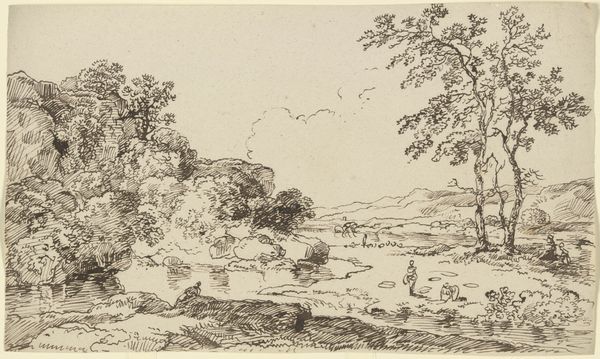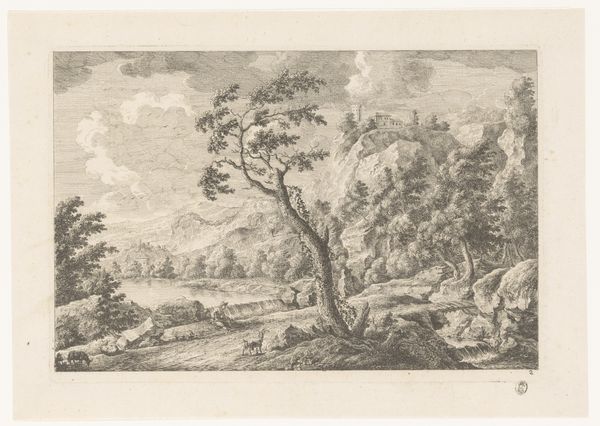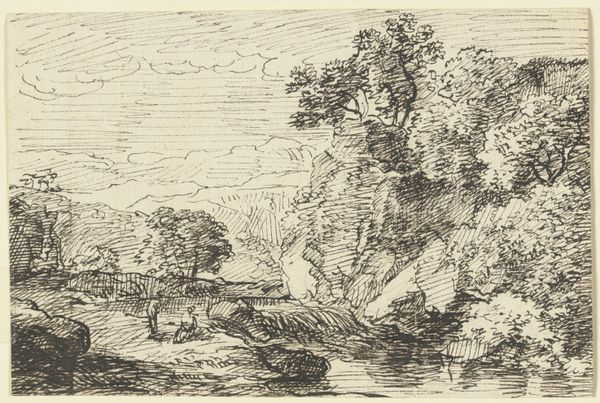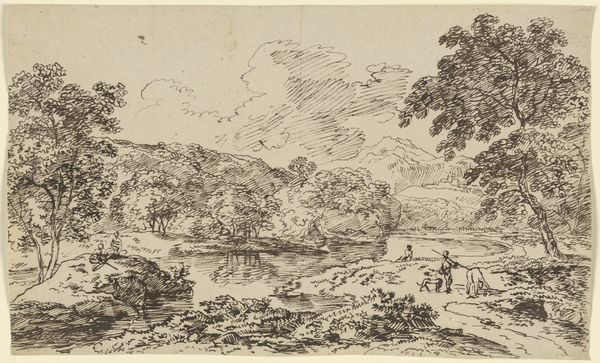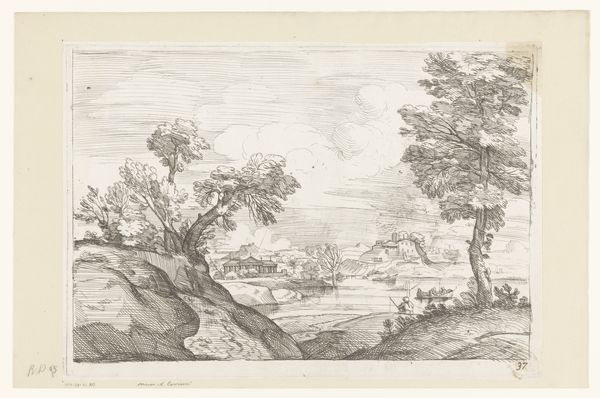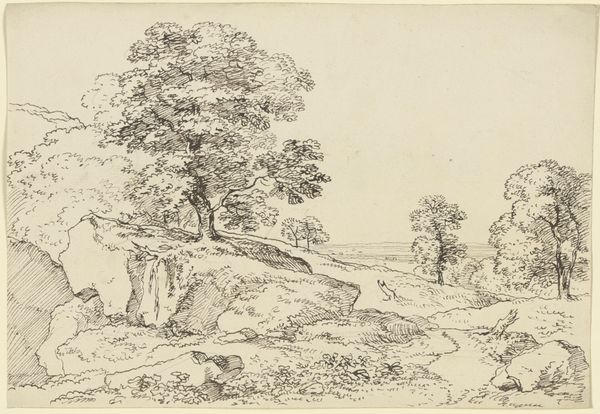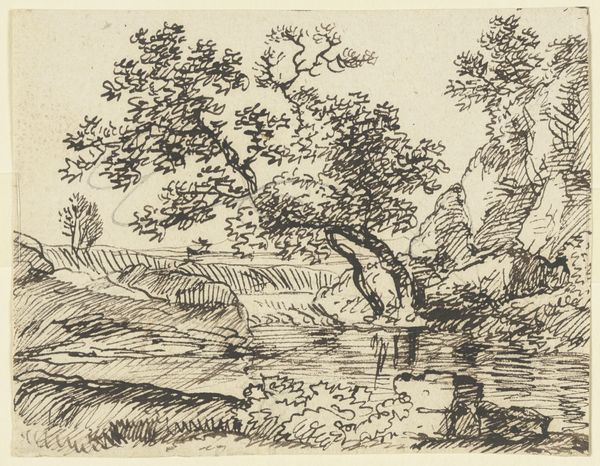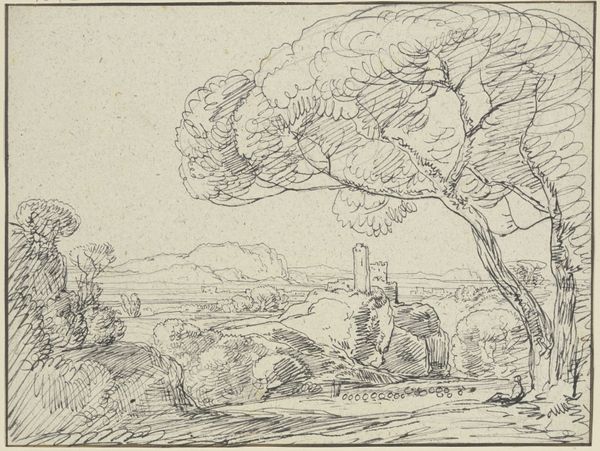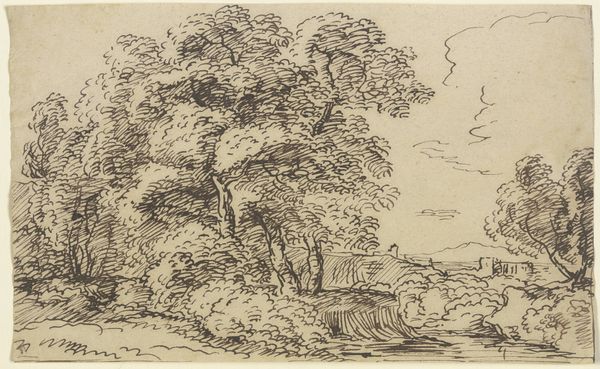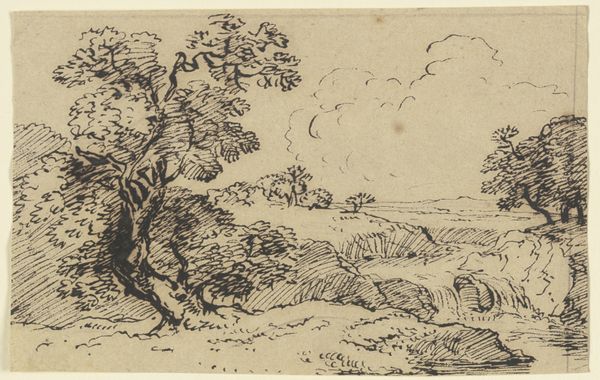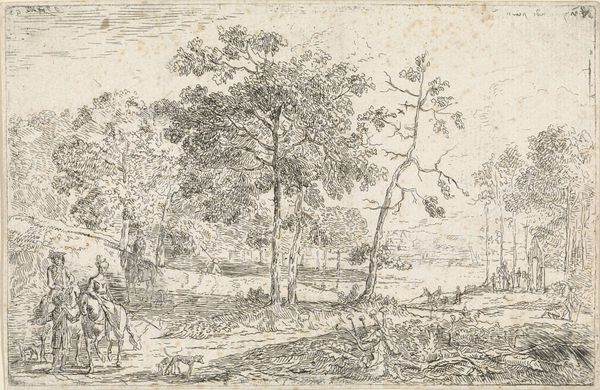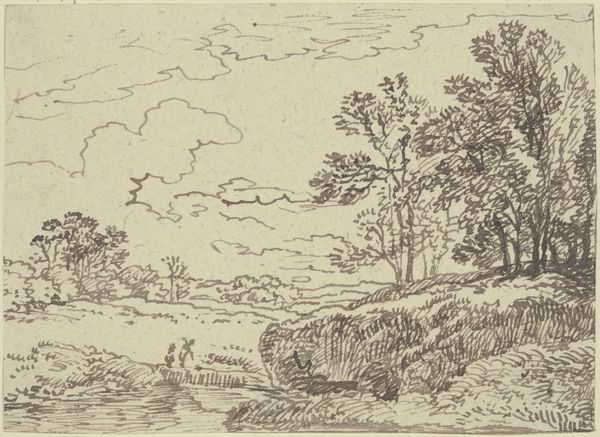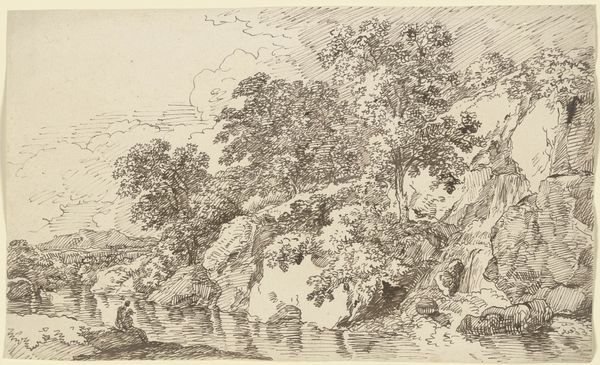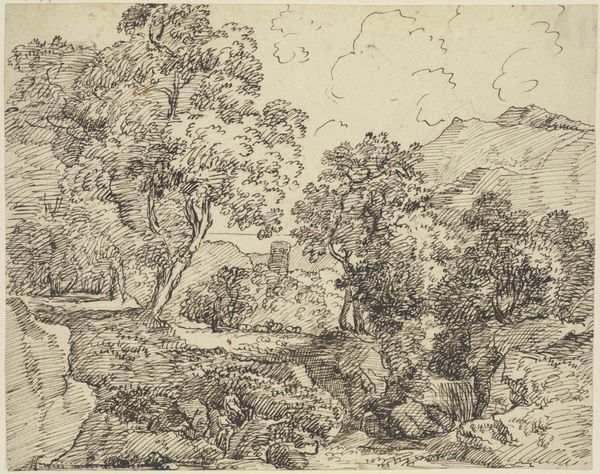
drawing, ink, pencil
#
drawing
#
landscape
#
ink
#
pencil
Copyright: Public Domain
Curator: Today, we are looking at “Fluss in bergiger Landschaft”, or “River in Mountainous Landscape”, an ink and pencil drawing. Editor: The linework feels quite expressive, almost feverish, with a palpable sense of energy across the landscape. It really draws you in. Curator: Indeed. While undated, it comes to us from Franz Kobell and sits within a fascinating context. We see here a dialogue between Enlightenment ideals and emerging Romantic sensibilities regarding nature. Editor: Given its dependence on mark-making as opposed to a strict perspectival depiction, how do you feel Kobell thinks through landscape conventions of the era, of framing land? Curator: Well, one way to understand the artist's process here is through class and political lenses. Remember, access to the landscape, to unspoiled nature, was stratified, and in thinking about gender, who was taught to document it with which methods, the drawing takes on new resonance. For whom were these views meant, and how did that intention shape the marks themselves? Editor: I agree, the lines here denote class for certain. I wonder if there are references to material accessibility within this work? Like the ink and pencil themselves–inexpensive means used to record potentially commodifiable resources within the very terrain depicted? It prompts an intersection of natural resource representation, accessible artistic methods and then a potentially very stratified viewer of this representation. Curator: I see what you mean. By centering materials, we uncover layers about the consumption and labor connected to artistic expression in this era. A lot is communicated with so little. The political statement that art creation materials afford needs consideration, and then its social legacy. Editor: And while on its face, just an unassuming work on paper in the Städel Museum, the labor put forth to produce the pencils, manufacture ink, prepare paper and then mobilize and distribute this output cannot be neglected! It's anything *but* effortless. Curator: Right. By acknowledging those systems of labor and access, and asking "Who gets to depict what, and how?" we gain an even richer view of the composition as a whole. Editor: Exactly, thinking through not just its representational content but its *making* deepens our interaction.
Comments
No comments
Be the first to comment and join the conversation on the ultimate creative platform.
